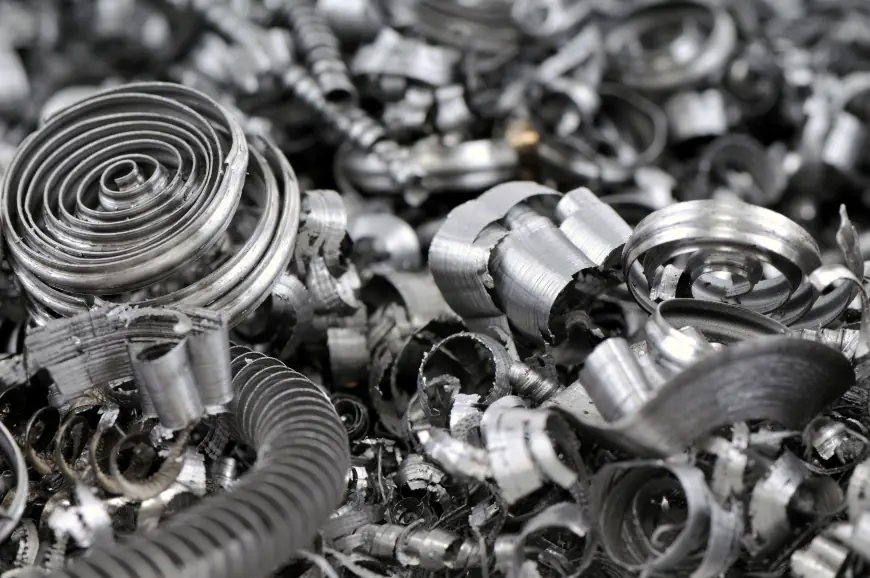Titanium Scrap Recycling and Market Value for Industries
Explore titanium scrap recycling, benefits, applications, and market value. Learn why titanium scrap is vital for aerospace, medical, and industrial sectors.

Titanium is a modern engineering metal that has transformed industries ranging from aerospace to healthcare. It is valued for its strength, light weight, and resistance to heat and corrosion. However, the high cost of producing titanium directly from ore makes titanium scrap a vital part of the global supply chain.
Instead of discarding unused or end-of-life titanium, industries recycle it. Recycling reduces costs, minimizes waste, and ensures sustainable access to this critical metal. In this blog, we explore the role of titanium scrap in industry, its recycling methods, applications, trading practices, and market outlook.
What Is Titanium Scrap?
Titanium scrap refers to leftover material generated during manufacturing or recovered from discarded products. It is collected, processed, and reintroduced into the production cycle. Scrap can include:
-
Off-cuts from machining operations.
-
Turnings and shavings from aerospace components.
-
Solid sheets, billets, or rods.
-
Worn-out consumer products such as medical implants or sports gear.
This recovered titanium helps industries meet their requirements without relying entirely on expensive virgin titanium.
Categories of Titanium Scrap
Titanium scrap is sorted into categories to simplify processing and pricing.
1. Solid Scrap
-
Large chunks of titanium, such as sheets and billets.
-
Highly valuable due to low contamination risk.
2. Turnings and Fines
-
Small chips, curls, or powders generated from machining.
-
Require careful handling due to flammability.
3. Titanium Alloys
-
Aerospace-grade alloys like Ti-6Al-4V.
-
Retain the special properties of virgin titanium.
4. Revert Scrap
-
Produced in foundries during processing.
-
Often re-melted directly without leaving the facility.
5. Consumer Scrap
-
Generated when medical, automotive, or sporting goods reach end-of-life.
-
Requires purification before reuse.
Titanium Scrap Recycling Process
Recycling titanium is not as simple as recycling steel or aluminum. Titanium is reactive, so advanced technology is required to prevent contamination.
The recycling process usually follows these steps:
-
Collection: Scrap is collected from aerospace, automotive, medical, and industrial facilities.
-
Segregation: Sorting ensures different grades and alloys are separated.
-
Cleaning: Oils, paints, and coatings are removed.
-
Melting: Scrap is melted using vacuum arc remelting (VAR) or electron beam furnaces to avoid oxidation.
-
Casting: The refined titanium is cast into ingots, bars, or powder for reuse.
This process reduces costs and ensures titanium maintains its original properties.
Importance of Titanium Scrap in Industries
Recycling titanium scrap has become critical for multiple industries:
Aerospace
Titanium’s strength-to-weight ratio makes it essential for aircraft structures, engines, and landing gear. Recycled titanium supports growing aviation demands at lower costs.
Medical
Biocompatible titanium scrap is recycled into implants, prosthetics, and surgical equipment. It ensures affordable healthcare solutions.
Marine
Ships, submarines, and offshore rigs rely on titanium for corrosion resistance. Recycled scrap makes these applications cost-effective.
Chemical Processing
Heat exchangers, reactors, and piping systems use titanium for its resistance to aggressive chemicals.
Consumer Goods
Bicycles, golf clubs, and high-end watches often incorporate titanium for durability and aesthetics.
Benefits of Titanium Scrap Recycling
Recycling titanium scrap provides significant benefits:
-
Cost Savings: Reduces dependency on expensive virgin titanium.
-
Sustainability: Cuts down mining and conserves natural resources.
-
Waste Reduction: Prevents large-scale industrial waste accumulation.
-
Energy Efficiency: Consumes less energy compared to extraction.
-
Market Advantage: Companies can lower production costs and increase competitiveness.
Titanium Scrap Price and Market Dynamics
The titanium scrap price depends on several key factors:
-
Form of Scrap: Solids fetch higher prices than turnings.
-
Purity: Aerospace-grade scrap is more valuable than mixed scrap.
-
Global Demand: Strong demand in aviation and defense raises prices.
-
Regional Supply: Availability affects pricing in different countries.
-
Processing Costs: Higher energy and labor costs increase overall scrap prices.
In 2025, titanium scrap continues to command a strong market due to expanding aerospace, medical, and green energy industries.
Titanium Scrap Buyers and Suppliers
The titanium scrap industry involves a wide network of suppliers, buyers, and traders:
-
Suppliers: Machining workshops, aerospace companies, shipyards, and hospitals.
-
Buyers: Recycling plants, foundries, and manufacturers.
-
Traders: Scrap yards and brokers who connect suppliers with global buyers.
When choosing a supplier or buyer, businesses look for:
-
Consistent scrap quality.
-
Transparent testing and pricing.
-
Compliance with environmental regulations.
-
Strong supply chain networks.
Challenges in Titanium Scrap Recycling
Recycling titanium scrap is essential, but challenges remain:
-
Reactivity: Titanium reacts with oxygen and nitrogen at high temperatures.
-
Flammability: Fine turnings and powders are highly flammable.
-
High Costs: Advanced recycling equipment increases expenses.
-
Limited Facilities: Not all countries have the technology for titanium recycling.
Sustainability and Environmental Impact
Titanium scrap plays an important role in sustainability. Recycling reduces mining, saves energy, and lowers the carbon footprint of industries. Governments and corporations are actively promoting recycling to achieve circular economy goals.
By focusing on titanium scrap recycling, industries can align with environmental policies while ensuring steady access to valuable raw materials.
Future Outlook of Titanium Scrap
The demand for titanium scrap will only grow in the coming years. Key factors shaping the future include:
-
3D Printing with Titanium Powder: Scrap can be converted into powder for additive manufacturing.
-
Rising Aerospace Demand: Aircraft and defense applications will require large amounts of titanium.
-
Medical Industry Growth: With an aging population, implants and surgical tools will see higher demand.
-
Global Green Policies: Recycling will be supported by stricter environmental regulations.
Practical Tips for Buyers and Sellers
For Sellers:
-
Keep scrap free from oil, paint, or coatings.
-
Separate different grades before selling.
-
Build partnerships with certified recycling facilities.
For Buyers:
-
Ensure suppliers provide test certificates.
-
Check compliance with international recycling standards.
-
Negotiate long-term contracts to stabilize pricing.
Conclusion
Titanium scrap has become a vital resource in today’s industrial world. From reducing costs to promoting sustainability, it supports industries ranging from aerospace to medical technology. The recycling process ensures titanium remains affordable and available, while also contributing to global environmental goals.
What's Your Reaction?
 Like
0
Like
0
 Dislike
0
Dislike
0
 Love
0
Love
0
 Funny
0
Funny
0
 Angry
0
Angry
0
 Sad
0
Sad
0
 Wow
0
Wow
0


















































